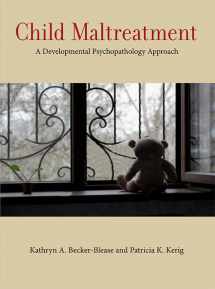
Child Maltreatment: A Developmental Psychopathology Approach (Concise Guides on Trauma Care Series)
Book details
Summary
Description
Child maltreatment has enormous costs, both at the individual and the societal level. While we are better equipped than ever to help maltreated children, fundamental questions remain. How does normal development go awry in these children? Why are some children more affected than others? And how can concerned professionals best help these children and their families?
This book explains the science of developmental psychopathology for clinicians and other professionals who work with at-risk children. The authors focus particularly on how maltreatment differentially affects children at key stages of their lives, from infancy to early adulthood. Armed with this understanding, clinicians can be aware of age-specific vulnerabilities and better tailor their interventions.


We would LOVE it if you could help us and other readers by reviewing the book
Book review



